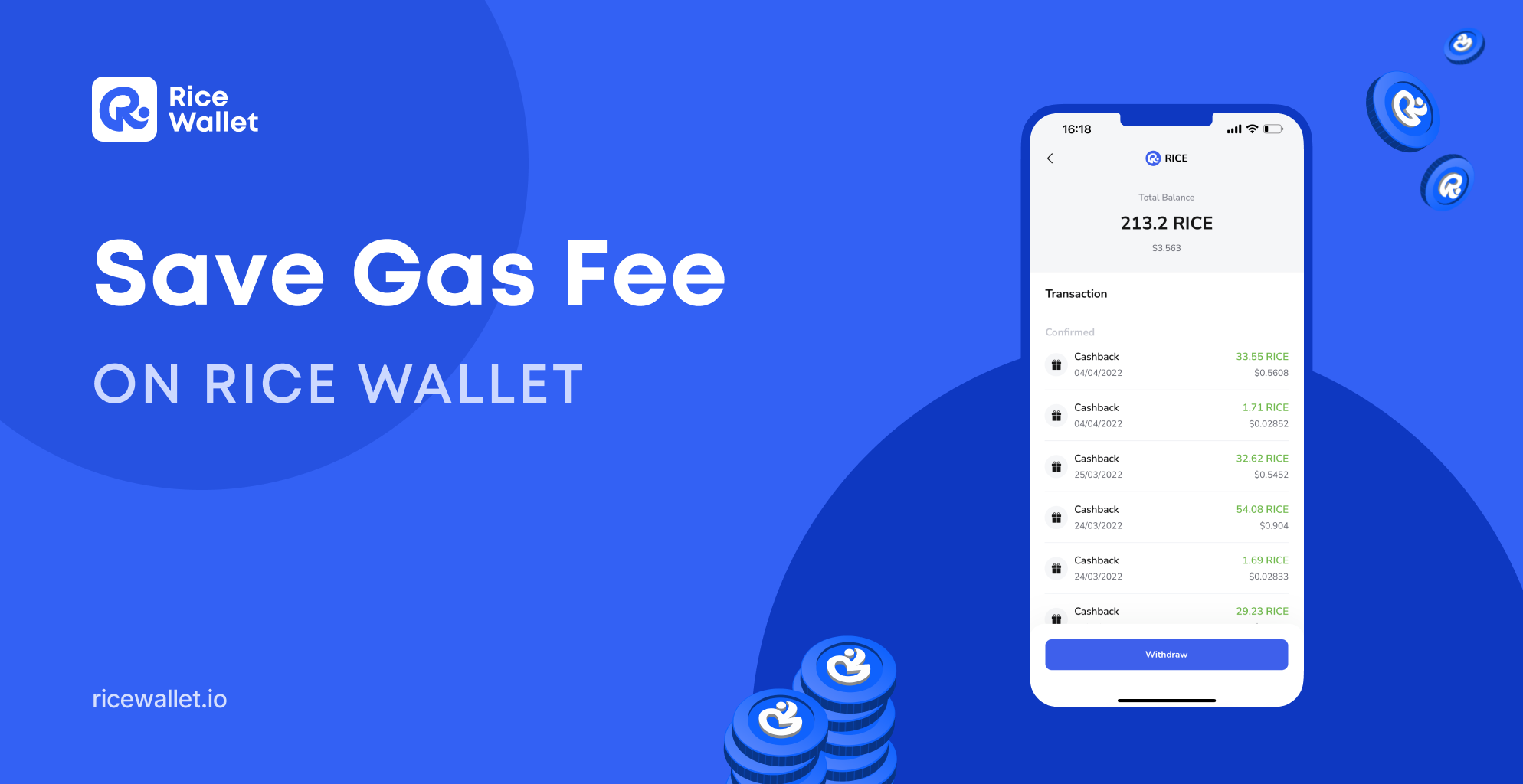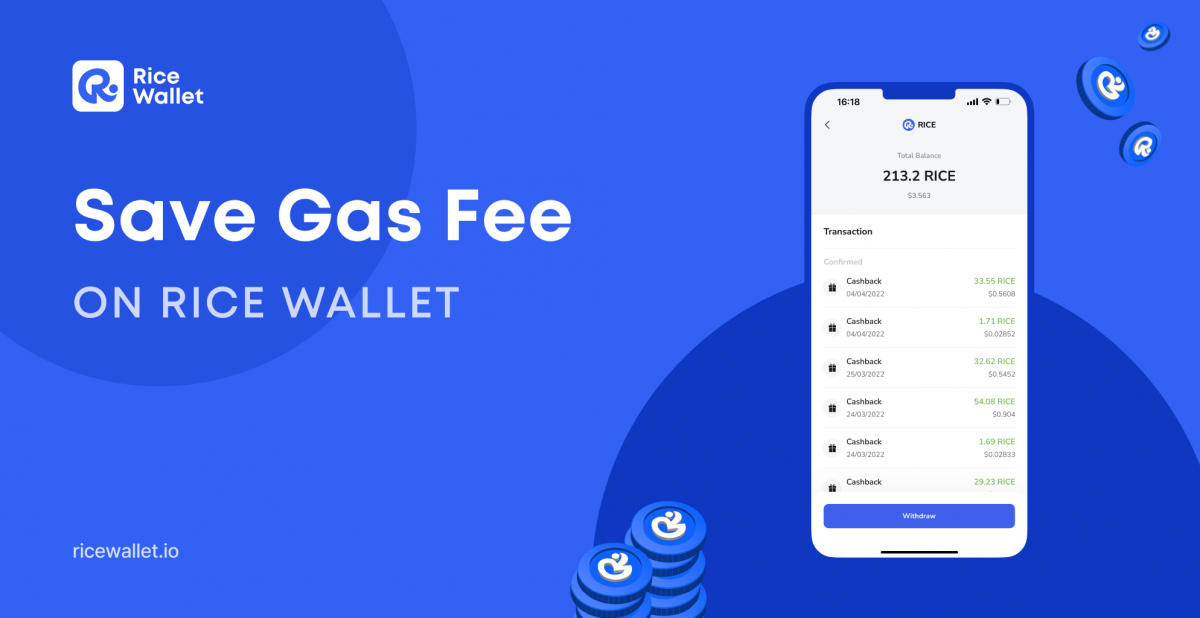
When starting with the DeFi market, Gas fee is an indicator that can affect profit/loss results for investors. The following article will discuss Gas fee and provide some tips on how to save Gas fees while using RICE Wallet.
What is Gas Fee?
Gas Fee is a fee paid to the network when making a transaction on the blockchain, in which Gas is a unit used to measure the amount of energy needed by a computer to perform a specific transaction on the network.
The Gas Fee will be used for:
- Transactions on blockchain
- Smart contract execution
- Launching decentralized applications (dApps)
- Payment for data storage
Gas Fee on Blockchain Network
Each blockchain network has its own requirements for Gas fees. Users who make transactions on any blockchain network are required to pay Gas fees in the token of that network.
For example, when transferring assets between 2 addresses on the Ethereum network, the Gas fee needs to be paid in ETH. Similarly, the token to pay gas fees for BNB Smart Chain is BNB, Polygon is MATIC, Avalanche C-Chain is AVAX.
High or low gas fee depends on many factors:
- The faster the transaction speed, the higher the gas fee
- The more complicated the transaction, the higher the gas fee
- The more people make transactions in the network, the higher the gas fee
- The higher the price of the platform token, the higher the gas fee
In addition, there are many other factors affecting gas fees such as gas prices regulated by the network, transaction needs of users at a time,…
Know how to get token to pay for gas fee here.
Save Gas fee on RICE Wallet
So, Gas fees are transaction fees to pay for the network. RICE Wallet does not require user fees for all transactions.
However, the gas fee is too high, affecting the investment decision of users. Therefore, RICE supports users by cashback 30% gas fees for all transactions, up to 1$ RICE and 2 transactions per day. Users will be cashed back with RICE and RICE will be added to the user’s Reward wallet.
In addition, there are several ways to optimize gas fee:
- Swap the correct pair of listed tokens to simplify transactions. For example, GMT is currently listed in the GMT/USDC pair on PancakeSwap. If users convert from USDC to GMT, it will be more economical than converting from other tokens to GMT.
- Choose a time when the network token price is less volatile for trading.
- Monitor the network’s transaction density and limit transactions when many people are trading at the same time.
- If the token is listed on more than one network, trade on the cheaper one. Currently, the gas fee of the BNB Smart Chain, Polygon, and Avalanche networks are lower than that of Ethereum.
